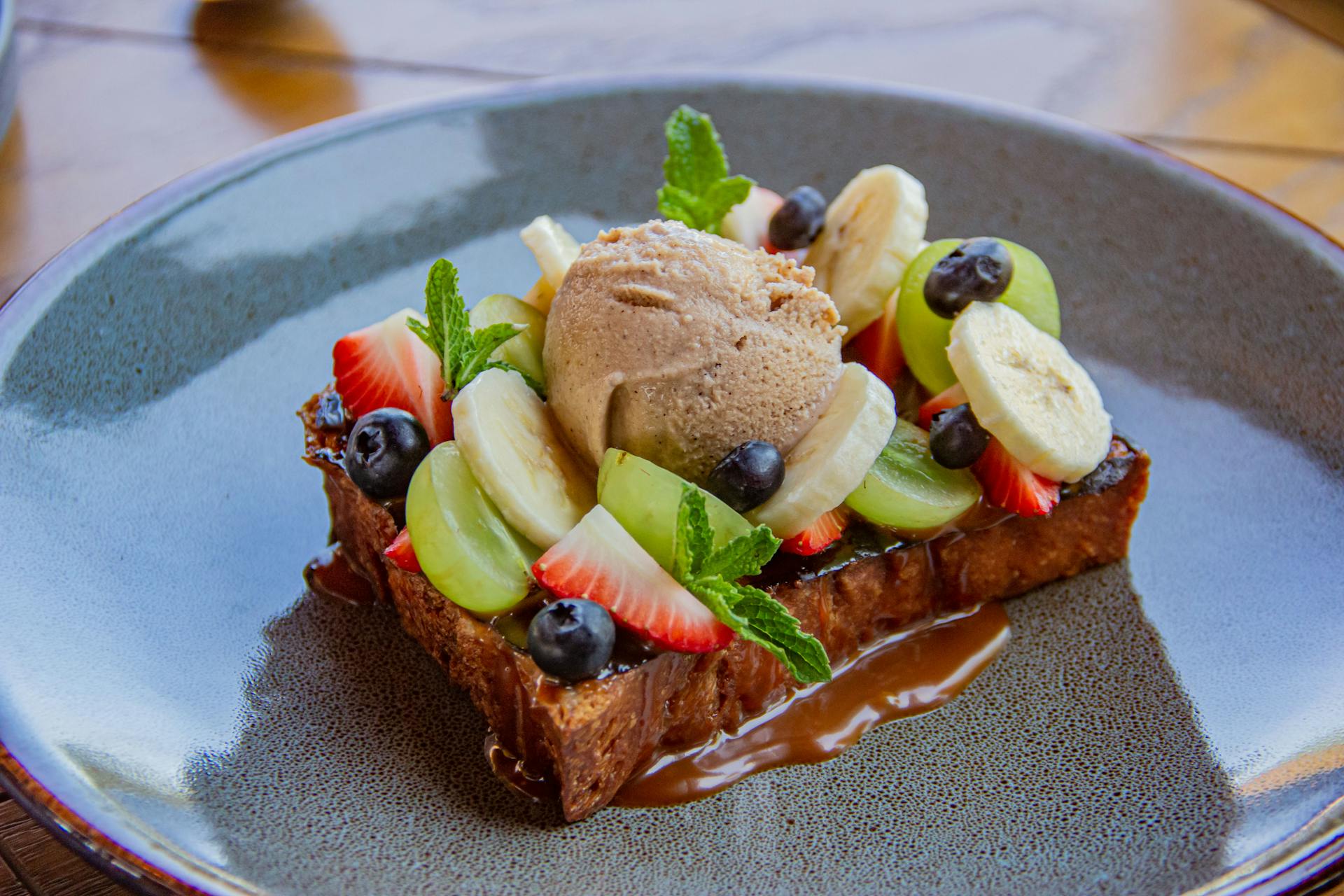
If you’re watching your carb intake, you probably already know that breaded chicken isn’t the best choice when it comes to low-carb eating. But if you’re looking for an indulgence now and then, knowing just how many carbs are in breaded chicken can help you plan out your meals better.
The first step is to consider the ingredients used in most breaded chicken recipes. The key components include flour or breadcrumbs, eggs and/or milk (for binding), a fat for cooking (such as oil or butter) and herbs and spices for flavor. It all adds up to quite a lot of carbs! Depending on the size of your piece of chicken, the amount of carbohydrates per serving can range from 15-20g per serving on average.
It's important to note that this carb count can vary greatly depending on which type of ingredient is used in the recipe—for example, a healthier version might use plain yogurt instead of cream -which reduces he carbohydrate count significantly! Additionally healthy versions such as baking with cornflakes or oatmeal flakes make this dish much healthier by reducing carbohydrates quite significantly- but also making it gluten free if desired!
So while breaded chicken isn’t exactly diet food, it doesn't have to be off limits completely – there are plenty ways enjoy it while still keeping your carb intake at a reasonable level. With all those delicious possibilities available, nobody needs tell again that “breaded Chicken is bad” Just remember moderation & use smart substitutes wherever possible and take advantage -allowing yourself to have fun moments & treats without compromising health goals too often by doing so!
Consider reading: Chicken Noodle Soup
How many calories are in breaded chicken?
Breaded chicken is a popular dish for many families and is a delicious way to enjoy chicken. The amount of calories in breaded chicken depends on the preparation method, as well as the size of the piece.
If you’re wondering how many calories are in a typical piece of breaded chicken, it’s typically around 150-250 calories per 3-ounce portion. However, if you prefer your chicken deep fried or extra crispy - this canadd more fat and calories to the dish. If that’s your style, you may be looking at closer to 260-350 calories per 3-ounce portion. And if you opt for large pieces with extra battering - such as those found at some fast food restaurant – the calorie count could go all the way up 350–450 per 3-ounce portion!
For all these carb loaded variations of this tasty treat it’s best to remember that smaller portions should be served with some fresh vegetables or salad on the side – bothfor added nutrition and flavour, plus they help balance out those additional calories from your breaded chicken!
Curious to learn more? Check out: Chicken Salad Sandwich
How much fat is in breaded chicken?
Deep-fried or breaded chicken has become an increasingly popular snack and meal option, but because it is usually fried in oil, most consumers are concerned about the fat content. Understanding how much fat is in breaded chicken dishes can help you make the healthiest choice when selecting a meal.
The amount of fat found in breaded chicken depends on a variety of factors, including the type of breading used and how the chicken is cooked. Generally speaking, a piece of boneless and skinless fried chicken cutlet that has been battered with egg and flour will contain about 10 grams of fat for every 3-ounce serving. On the other hand, if you opt for a higher-fat variety like deep fried calamari steak or tempura shrimp which leaves more oil on after cooking - this would contain 12 grams of fat per 3 ounces.
When it comes to healthier options such as baked or grilled chicken breasts with no added oils - these may contain as little as 5 grams of fats per 3 ounce serving size! This makes them an ideal option for those who want to reduce their caloric intake while still enjoying the taste of deep-fried food favorites at restaurants.
In conclusion, its clear that it’s impossible to pinpoint exactly how much fat is in each type of breaded dish without taking into account specific ingredients used (i.e., flour vs cornmeal batter) and preparation methods (baked & grilled versus frying). However – if you're looking for lower calorie options remember to ask before ordering from any menu if possible – opting for stir fry dishes over deep frying could make all the difference between full belly eats that are healthy too!
A unique perspective: 2 Fried Eggs
How much sodium is in breaded chicken?
Understanding how much sodium is in breaded chicken is important for people monitoring their salt intake or looking to make healthy food choices. Although the specific amount of sodium can vary based on the breading used, as well as how it was prepared, there are a few factors that can help you estimate how much sodium is in your chosen meal.
Generally speaking, pre-packaged breaded chicken products are known to be higher in salt content than options that you bread yourself. A store-bought frozen version of this popular dish typically contains between 300 and 400 milligrams of sodium per serving. Additionally, many restaurant outlets use larger amounts of seasoning and may contain upwards of 600 milligrams per portion.
For those looking to reduce their total daily intake, it’s possible to dramatically reduce the amount of salt in your meal by preparing or selecting an unseasoned version at home or from the grocery store (assuming a nutrition label is present). Additionally for diners with severe dietary restrictions due to health concerns such as hypertension, opt for baked over fried versions wherever possible and make sure to ask your waiter about preparation details when ordering at restaurants.
In summary, while its difficult predict exactly how much sodium is contained within a given piece of fried chicken without additional information; knowing what type was purchased and identifying where it originated will help you determine approximately how much sodium per portion you should expect consume with that dish.
Readers also liked: Buy Frozen Breaded Mushrooms
What vitamins are in breaded chicken?
When you think about the nutritional value of breaded chicken, vitamins are probably not the first thing that come to mind - it's usually thought of as being highly caloric with little nutritional value. But believe it or not, there are actually quite a few important vitamins that can be found in breaded chicken!
One of the top vitamins you'll find in a serving of fried chicken is Vitamin B3 (Niacin). This vitamin helps to support energy-yielding metabolism, and helps maintain healthy skin and nerves. Additionally, Vitamin B6 (Pyridoxine) is also present in fried chicken. Vitamin B6 plays an important role in red blood cell metabolism, as well as protein and carbohydrate metabolism - which means it helps keep our bodies functioning properly!
If you're looking for sources of dietary iron, look no further than your favorite fried chicken meal! Iron is essential for carrying oxygen from your lungs throughout your body; and without enough iron, your body can suffer from anaemia which can lead to fatigue and digestion problems. Chicken is also rich in zinc which assists with overall immunity; magnesium for strong bones; selenium for thyroid health; and biotin which aids metabolic activity within cells.
Although fried chicken does have beneficial vitamins packed into each piece, one should still use caution when consuming large amounts - because too much fat intake won’t do any good if consumed regularly – opting instead to bake or grill instead could be wise move health-wise. Ultimately however it all depends on how often you consumebreaded chickens – if its every once an while then these vital vitamins definitely do us good!
How much protein is in breaded chicken?
When it comes to nutrition, one of the biggest questions many people have is how much protein can be found in breaded chicken. The answer depends largely on the type of breading used, as well as its serving size and degree of doneness.
If you’re eating a four-ounce portion of fried boneless and skinless chicken breast which has been covered in plain breadcrumbs and cooked through, then this would provide you with around 36 grams of protein. On the other hand, if the same exact portion is fried in a low-calorie or gluten-free batter instead then it provides about 32 grams or even less.
However if you’re opting for an oven-baked version instead and choose seasoned breadcrumb coating rather than simply plain crumbs then that four ounces can provide up to 30 grams. Both baked and fried variations are generally above 25% protein when compared to their total weight; for example a 4oz piece may weigh 100g+ with around 25g (0r more) coming from proteins within it. As previously mentioned however, this percentage could vary significantly depending on how much batter/breadcrumb use etc as well as its cooking method etc but usually speaking a similar sized piece will offer at least 20 - 30+ grams of proteins each time!
Whether buying pre-made store bought products or making your own creations at home just know that by taking into account all these factors like serving size, ingredients included and cooking technique you can easily determine how much protein there is to be found within your dinner plate's breaded chicken!
How many grams of carbs are in breaded chicken?
If you’re asking how many grams of carbs are in breaded chicken, the answer depends on a few factors. First, the type of chicken used – whether it’s boneless skinless chicken breast or with the skin and bones on will affect the carb count. Additionally, what type of breading is used and the recipe measurements will have an impact on the carb content in each serving size that is made.
Generally speaking, a typical serving (3 ounces) of raw or cooked boneless skinless chicken should contain 0 grams of carbohydrates, while grilled or fried versions may contain 2-3 grams per 3 ounces. This can increase to 5-9grams if a light coating of seasoned flour or cornmeal are used as part of a marinade or to create a crispy crust during cooking. The amount can further increase up to 6-17g when certain high fat and added sugar flavorings like BBQ sauce are utilized as part or all of an outer layer coating applied before frying/baking/grilling etc..
Given it largely depends upon what ingredients and seasonings were used in making that particular version being consumed, being aware ahead-of-time about exactly what is going into your dish is key for keeping things low carb friendly!
Sources
- https://www.healthline.com/nutrition/14-low-carb-fast-foods
- https://www.eatthis.com/best-frozen-chicken-nuggets/
- https://recipethis.com/how-to-cook-breaded-chicken-in-an-air-fryer/
- https://www.thespruceeats.com/wiener-schnitzel-recipe-1447089
- https://www.ketofocus.com/recipes/keto-chicken-and-dumplings/
- https://www.nutrition-charts.com/buffalo-wild-wings-nutrition-information/
- https://www.schwans.com/product/fully-cooked-breaded-chicken-nuggets/56197
- https://www.theverge.com/2022/10/12/23400986/microsoft-activision-blizzard-cma-uk-response-regulator
- https://www.healthline.com/nutrition/is-chicken-good-for-you
- https://www.goodhousekeeping.com/food-recipes/healthy/g4056/healthy-chicken-dinners/
- https://www.bonappetit.com/recipe/perfect-pan-roasted-chicken-thighs
- https://www.eatthis.com/best-frozen-meatballs/
- https://fdc.nal.usda.gov/fdc-app.html
- https://www.atkins.com/how-it-works/library/articles/helpful-tips-ketogenic-foods-to-avoid
Featured Images: pexels.com


